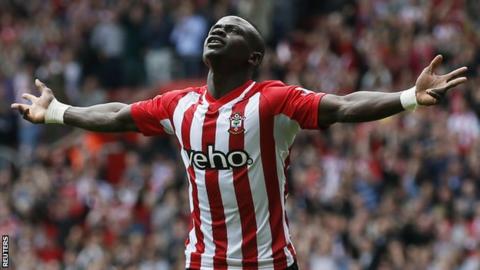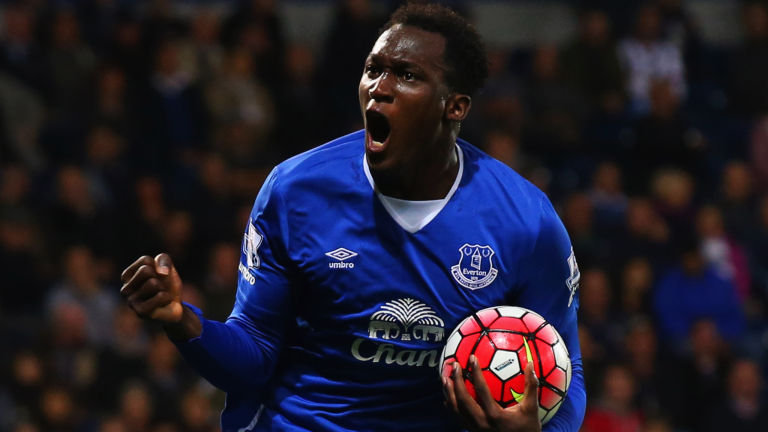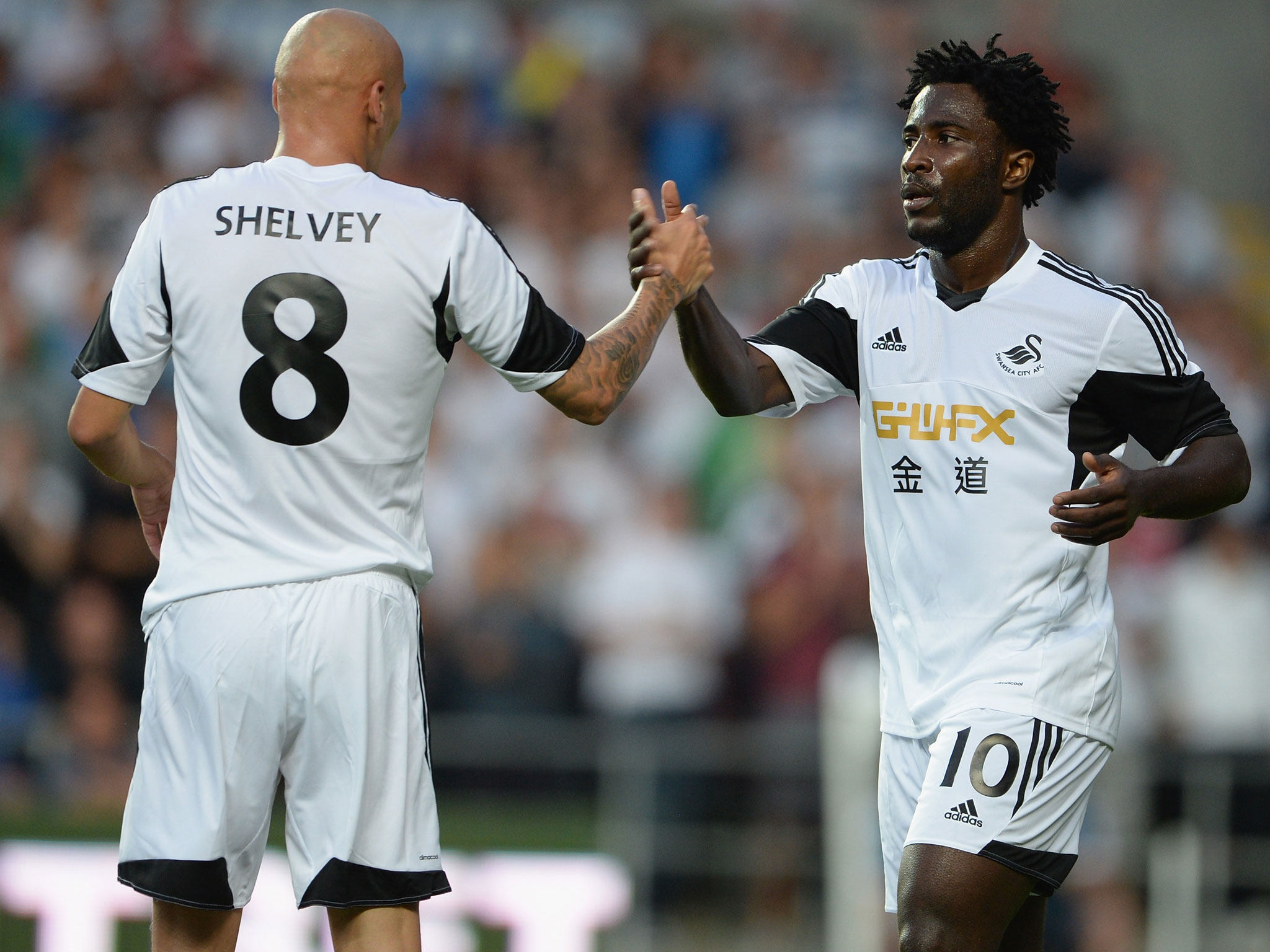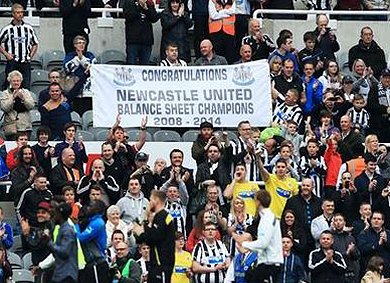The official announcement of Virgil Van Dijk’s £75m transfer to Liverpool on New Year’s Day takes Southampton’s gross profit from player sales in the last five years close to £300m. In that same time, they’ve refreshed and restructured their squad using the vision of five different managers, trying to remain competitive in the Premier League whilst also losing at least one major asset of their first team season-on-season. As the Premier League slowly begins to resemble ‘The Top Six and Everyone Else’, is it possible for those not part of the elite to stay in touch despite losing their star players?
“I think the most important thing is the size of the club, the culture of the club, the players, the manager and obviously the fans, who make the club this special.” No-one can blame Virgil Van Dijk, really. Loyalty has long been a thing of the past in football, and the opportunity to leap from the crown jewel of a mid-table Premier League side to the defensive savior of a club in the Champions League is one that very few would turn down. Having played a vital part in consecutive top ten finishes with Southampton, the towering Dutch defender felt it was time for a change and, after an extremely protracted transfer saga, he finally got his dream move. Much of the conversation around the move has focused on the transfer fee – a running theme in all high-profile moves in the last eight months – but Liverpool clearly see more than just an extremely competent player in Van Dijk. He’s also been the heartbeat of a side that have confounded expectations to earn themselves regular top-half finishes despite having an annual reshuffle. Southampton’s best players being cherry picked has become one of English football’s in-jokes. When Ronald Koeman was appointed Saints manager, he posted a picture of an empty training ground with the caption ‘Ready For Training!’ after five of Southampton’s first team squad had been sold weeks earlier. Koeman, like Pochettino before him and Puel after, used his nous in the transfer market to spend the money earned from player sales wisely in order to sculpt a side that could remain competitive whilst still living within its means. It’s a blueprint attempted by several Premier League clubs over the last five years, but its one that has yet to prove entirely fruitful. Of the twenty clubs in the Premier League, nine have recouped over £150m in transfer fees over the past five seasons. Five of those are in the top six (Arsenal have ‘only’ recouped around £120m). Each of the other four are interesting cases in their own right. The question is – can a team remain competitive after selling their most valuable assets?
Southampton’s story is something of a fairytale. After a long-anticipated relegation to the Championship in 2005, Saints began to flounder, eventually spending two seasons in the third tier before Nigel Adkins was appointed and took them to back-to-back promotions. Once back in the Premier League, with a squad consisting largely of the side that finished runners-up in League One, the Saints battled bravely against relegation and eventually survived – Adkins, however, did not. Replaced by Mauricio Pochettino, the following season saw a revitalised Southampton finish 8th, and suddenly the big clubs began to notice their star players. At the end of the season Pochettino was poached by Tottenham and a raft of the Saints first team followed him through the exit door. Rickie Lambert, Adam Lallana and Dejan Lovren all went to Liverpool for a combined £49m – the spine of the team now decimated – while Luke Shaw and Calum Chambers – another two key members of the first team – left for Manchester United and Arsenal respectively. The £95m in transfer funds may well have been the most tempting thing about the Southampton job for Ronald Koeman, as well as the opportunity to immediately stamp his identity on a side that had seen the guts of the previous season stripped out. The Dutchman immediately went to work, but rather than throwing money around willy nilly, he concentrated on value for money. Graziano Pelle, who had played under Koeman at Feyenoord, was signed for £8m. Dusan Tadic, a Serbian playmaker plying his trade in the Eredivise, was purchased from FC Twente for £10.9m. Sadio Mane was plucked from the overlooked Austrian Bundesliga for £11.8m, and more familiar names in Shane Long, Ryan Bertrand and Fraser Forster were brought in from Hull, Chelsea and Celtic. Suddenly Southampton had received a facelift, and come out of the other side nearly £20m in profit. That season, thanks to the goals of Mane and Pelle, Saints finished 7th. The following year, Nathaniel Clyne and Morgan Schneiderlein were sold to Liverpool and Manchester United for a combined £37.5m. Saints’ only major signing was Van Dijk. Once again, their form improved and they finished 6th.

One of the cornerstones of Southampton’s success, besides spotting a bargain in the transfer market, has been the seemingly endless supply of talent emerging from their youth academy. When the likes of Clyne and Schneiderlein were being sold, youth products such as James Ward-Prowse and Matt Targett were able to step in and deputise. Eventually, you would suspect, both of these players will find themselves subject to large transfer fees – this is nothing new either. Gareth Bale, Alex Oxlade-Chamberlain and Theo Walcott have all left the Southampton academy to become first teamers at big clubs, while in 1992 a Southampton academy graduate broke the British transfer record as Blackburn Rovers forked out £3.6m to bring Alan Shearer to Ewood Park. When you’re having to replace first-team players year-after-year, its handy to have a few home grown alternatives waiting in the wings.
That sixth placed finish earned Ronald Koeman admiring glances from a host of clubs, and he eventually plumped for Everton – a side with top four ambitions yet to be realised. Southampton turned to Claude Puel, who had just taken Nice into the Champions League, and unsurprisingly his first task was to replace the talent that had escaped through the gaping chasm of the transfer window. Two key players in Sadio Mane and Graziano Pelle both left the club in the summer of 2016, for China and Liverpool respectively, while Jose Fonte packed his bags for West Ham the following January. Their ersatz replacements were the promising Pierre Emile Hojberg, the promising Sofiane Boufal, and roll-of-the-dice Manolo Gabbiadini. Charlie Austin also joined in January, but spent much of the season out injured. However, despite selling two of their best players from the previous two seasons, Saints still managed to finish 8th and reach the League Cup final. Nothing to be sniffed at for a side that was losing at home to Bristol Rovers nine years ago. The Southampton board, however, disagreed. Having had it a little too good for the last few years, 8th was deemed unacceptable and Puel was relieved of his position, replaced by Mauricio Pellegrino. Wesley Hoedt and Mario Lemina – the first time Saints have spent serious money on signings – were recruited for a combined £34m, but Southampton have badly struggled. Injuries to Gabbiadini and Austin haven’t helped as they both represent Saints’ best source of goals, but with over half of the season gone the south coast club now find themselves in the midst of a relegation scrap, and with a bloated bank account. The £75m may come in handy if they’re to get out of their current predicament, but Pellegrino’s mettle in the transfer market will be seriously tested if he’s to find the right kind of player to lift his side.
After Southampton, Everton have the highest net receipts from transfers outside of the top six however, curiously, over half of their £200m income from the past five seasons was secured from the sales of two players. In fact, of the four clubs, Everton are the only side that have used the finances from player sales to seriously strengthen their team and attempt the challenge the oligopoly at the top of the Premier League. In David Moyes’ final season at Goodison Park, after years of working to a shoestring budget, Manchester City paid £12m for the services of Everton academy graduate Jack Rodwell, which allowed Moyes to reinvest and bring in John Stones, Steven Pienaar and Kevin Mirallas. That season Everton finished 6th. As Moyes embarked on his ill-fated stint in charge of Manchester United, Roberto Martinez was installed as Toffees manager, and one of his first pieces of business was to secure Romelu Lukaku on loan from Chelsea for the season – the promising young Belgian striker had finished the previous campaign as West Brom’s top scorer, and a bright future beckoned. With a first choice forward in the bag Martinez was able to use the £40m generated from the sales of Victor Anichebe, Nikica Jelavic and Marouane Fellaini to bolster his squad – Joel Robles, James McCarthy and Arouna Kone arrived, and the Toffees’ finished in fifth. So far, so good.

With a balanced squad and a lucrative league finish in the bag, Martinez was able to add flourishes the next season – the permanent signing of Lukaku, and the addition of flair players Mohamed Besic and Gerard Deulofeu for a total of £37m – without having to lose any of his star players to fund them. The added distraction of European football, however, tested Martinez’s squad to the limit, and they finished the season in 11th, scoring 13 fewer goals, and conceding 11 more. With an extra ten games added into the season, Martinez was forced to throw members of the academy into matches where he might usually have preferred to blood them slowly – Ross Barkley, an incredibly talented 21 year old playmaker – made 35 appearances across the season, while teenagers Brendan Galloway, Tyias Browning, Kieran Dowell and Ryan Ledson all made Premier League appearances. The slow decline of the likes of Sylvain Distin and Leon Osman didn’t help either. Martinez was trusted with a further £30m the following season, but after the signings of Aaron Lennon, Ramiro Funes Mori and Oumar Niasse failed to improve Everton’s league position, Martinez was shown the door.
Ronald Koeman – now no stranger to overhauling a team – was appointed and his first job was to replace the outgoing John Stones after Manchester City purchased the young ball-playing defender for £47.5m. Just £70m later, and the new-look Toffees were back challenging the top six, with Morgan Schneiderlein providing steel in midfield, while Ashley Williams seemed a natural replacement for Distin in the heart of the Everton defence. Koeman finished 7th in his first season, and provided another slice of evidence in the ‘buy low, sell high’ model. Stones had arrived for £3m from Barnsley, giving Everton a gross profit of £44.5m. Throughout his first season, however, Koeman had the spectre of Lukaku’s sale hanging over him. It was likely that one of the top six would come in with an offer the Toffees couldn’t refuse, and eventually Manchester United secured the striker’s signature for £75m. With that chunk of change, supplemented by the enormous TV money being spread across the league, Everton were able to spend big. Jordan Pickford, Michael Keane, Sandro Ramirez, Davy Klaasen, and Gylfi Sigurdsson all arrived amidst a spending spree of £120m. Wayne Rooney returned to his boyhood club on a free. Everton started the season without an experienced out and out striker, and they struggled. Having failed to see a return on their investment, the Everton board were quick to wield the axe on Koeman. His replacement, Sam Allardyce, has steadied the ship, but already splashed out nearly £30m on Turkish striker Cenk Tosun. For Everton, the system has only worked to a point.
If Everton’s decision to sell their only goalscorer seems like witless folly, then it’s worth checking in on the fortunes of Swansea City over the past five seasons. As the only side in the top flight with a net profit since 2012, its perhaps no surprise they find themselves struggling towards the bottom of the Premier League. After promotion in 2011 they enjoyed a decent first season in the top flight, which led to Liverpool (post-Brendan Rogers defection) splashing out £15m on Joe Allen, and Manchester City spending £6m on Scott Sinclair. Newly-appointed manager Michael Laudrup used his contacts in Spain to unearth a few gems, none more notable than the £2m Michu. Having enjoyed a solitary season in La Liga with Rayo Vallecano, scoring 15 goals, Laudrup took a punt on Michu and installed him as the Swans first choice striker. In his first season, he scored 18 times and helped Swansea to 9th place, but injury blighted his second season and he mysteriously drifted out of favour and back to the Spanish leagues. No bother for Laudrup. The funds gathered from the sales of Allen and Sinclair could be used ahead of the following season as Wilfried Bony – top scorer of the Eredivisie in 2013 – arrived to bolster the Swans attack, joined by Jonjo Shelvey, Jordi Amat, and Lukas Fabianski. While £20m on four players may seem like peanuts now, it was considered a massive outlay by Huw Jenkins, and he expected results on the pitch to reflect his investment. With the Swans in danger of being dragged into a relegation scrap, Laudrup was sacked and Swans stalwart Garry Monk installed as player/manager. Monk guided Swansea to 12th place, but the following summer the ‘sell to buy’ model was brought back into play. The excellent Michel Vorm and Ben Davies were both shipped off to Tottenham for a combined £15m, while Bony followed Sinclair to Manchester City in an eye-watering £28m deal. Monk, much to Jenkins’ delight, played a blinder in the free transfer market, snapping up Bafetimbi Gomis – one of France’s most lethal strikers – for diddly squat – whilst also adding guile into midfield with Gylfi Sigurdsson. The rebuild worked, and the Swans finished 8th.

The absence of Bony soon caught up with the Swans and, despite securing the signature of Andre Ayew on a free, Monk was eventually sacked for poor results. There was no serious money invested ahead of the 2015/16 season, and again the Swans struggled. Francisco Guidolin eventually guiding them to safety, having seen Jonjo Shelvey leave for Newcastle in the January transfer window. In the hope of repeating their boom and bust cycle, Swansea sold two of their best players for £40m – Ayew and Williams heading to West Ham and Everton respectively – which was then reinvested in a host of new players, Fernando Llorente, Alfie Mawson and Jordan Ayew among them. Suddenly, the model started to catch up with the Welsh side, and they struggled to arrest the slide. Guidolin and his replacement Bob Bradley were both shown the door through the course of the season, and it took an excellent run of results with Paul Clement in charge to keep Swansea up. Lesson learnt surely?
Or not. Because ahead of this season the Swans sold their best player in Sigurdsson and their top scorer in Llorente for a total of £50m. This was reinvested in the re-signing of Bony (a shadow of the player in his previous spell) and the loan signing of Renato Sanches (yet to show the form that earned him a move to Bayern Munich). Unsurprisingly, they’ve massively struggled for goals. Clement has paid with his job, and it remains to be seen whether Carlos Carvalhal will be backed in the January window, or if Jenkins is willing to gamble on three other teams somehow being worse than his own. While £50m net profit from transfers in five years may sound good in a business sense, it leaves a football club with almost no chance of competing at the top table.
Just ask Newcastle United supporters. The tongue-in-cheek ‘Balance Sheet Champions 2008-2014’ banner that has been a regular fixture at St James’ Park goes some way to exhibiting the frustration that Newcastle supporters have felt at seeing their team slide down the league table while owner Mike Ashley continues to under-invest in the playing staff. The age of Newcastle United becoming “the best pound for pound club” they could be has its roots in 2011. After bouncing straight back up to the Premier League at the first time of asking following 2009’s relegation, a mid-table finish saw some of Newcastle’s more valuable assets earn admiring glances. Young striker Andy Carroll was sold mid-season for £35m, and replaced with 34 year old Shefki Kuqi on a free. Fans demanded to know when this money would be reinvested, but luckily for Ashley not all of it had to be. Graham Carr’s appointment as chief scout had already unearthed some gems in the transfer market, and in 2011/12, £13m was spent on Yohan Cabaye, Demba Ba and Papiss Cisse, and Newcastle shot up the league, finishing fifth. Prime time for investment, you may think. But despite setting a foundation to build on, manager Alan Pardew was given very little to strengthen his squad - £7m for Vurnon Anita the only major summer signing. As the side lurched towards relegation, a panicked spending spree in January brought five new faces to St James’ Park – partly funded by the sales of Ba, Leon Best and Fraser Forster. £18m worth of talent arrived from Ligue 1 – seemingly the place to find value for money in Europe – and the Toon survived. The following season, after a bright start and sitting comfortably in the top 7 at Christmas, Cabaye was sold for £19m to Paris St Germain. The money was not reinvested, and Newcastle slipped to tenth by the end of the season, enduring an awful run of results. Further sales, most notably Matthieu Debuchy’s £12m transfer to Arsenal, funded Pardew’s makeover in 2014, but Carr’s gems were quickly becoming duds. The £20m spent on Siem De Jong, Remy Cabella and Emmanuel Riviere may as well have been thrown into the river Tyne for all the good they did the team. Sensing the crowd turning on him irrevocably, Pardew left for Crystal Palace and John Carver survived relegation on the final day.

Ashley had appeared on Sky Sports before that crucial victory against West Ham promising to invest in the team and, to his credit, £70m was spent the following season on Gini Wijnaldum, Aleksander Mitrovic, Chancel Mbemba, Florian Thauvin, Andros Townsend and Jonjo Shelvey, but Steve McClaren – an absolute chancer disguised as a competent football manager – could not get a tune out of his expensively assembled squad, and despite his replacement, Rafa Benitez, going six games unbeaten at the end of the season, Newcastle were relegated. Their demotion gave Newcastle a chance to clear the deadwood from the squad – Cabella, Townsend, Wijnaldum and Sissoko accrued £75m in transfer sales – and Benitez built a squad able to challenge for promotion. A massive overhaul that left Ashley £25m in profit and helped Newcastle win the Championship was surely a chance to right the wrongs of the previous few seasons. “What Rafa wants, Rafa gets” was Ashley’s maxim. Unless, of course, it meant spending a significant amount of money. Further deck-clearing took place ahead of this season, but when Benitez needed the funds to secure players talented enough to ensure survival, the pot was suddenly empty. A net spend of £10m – bang on Newcastle’s five year average – gave Benitez little to work with heading into the season. Unsurprisingly, the team have struggled.
So what do these four examples tell us? Well, firstly, don’t sell your best players. Easier said than done. But all four are cautionary tales of how a lack of sensible reinvestment can dismantle a winning formula. Southampton’s inability to replace the goals of Mane and Pelle has left them light up front, with risky signings like Long, Austin and Gabbiadini yet to provide a regular source of goals. To make matters worse they’ve just sold their best defender. Swansea, having seen the damage a lack of goals can do when your best striker is sold, repeated the trick two-fold by removing their creativity alongside their source of finishing and hoped that a 20 year-old loan signing could make up the deficit. Everton spent big after losing their main striker in the hope of building a swashbuckling attacking side with, if anything, too much creativity. But the lack of end product has left them with a manager unable to make the most of his tools. Allardyce is a lumberjack with a sewing machine. Meanwhile Newcastle, with the best manager they’ve had since 2004, are treading water because their owner would only sanction £5m for a first-choice striker. Remarkably, they remain the only current Premier League club who’s record transfer hasn’t been broken for a decade.
In the Premier League, money talks. In the modern game, it’s no longer possible to run a club as a successful business – the most successful clubs are often run at a loss, and it’s the pride of victory that spurs their financers on rather than profits. There may be a case for the buy-to-sell model, but only in the short term, and the endless asset stripping of clubs can only lead down the road to oblivion. Leicester City will attest to that – after failing to replace N’Golo Kante following his £30m move to Chelsea, the Premier League champions found themselves in a relegation scrap. Its taken serious reinvestment for them to re-establish themselves as a mid-table side. The likes of Manchester City, Manchester United and Chelsea are unlikely to find themselves strong-armed into selling their most valuable assets anytime soon – for Arsenal, Liverpool and Tottenham the only threat comes from the sides above them with the most financial clout.
Looking at the current Premier League table, its not difficult to see a few sides currently entering the buy-to-sell cycle (though they’re unlikely to admit it). Burnley, enjoying an excellent season in which many of their players have received well deserved plaudits, sold their best defender in Michael Keane during the summer window. Fortunately James Tarkowski has stepped up alongside Ben Mee to replace him – don’t be surprised to see at least one of them depart Turf Moor next summer. Steven Defour, Jeff Hendrick and Robbie Brady are all on the radar of teams traditionally bigger than Burnley, and the Lancashire side’s resolve might well be tested sooner rather than later. Watford have been the other big surprise of the season so far, and the chances of Richarlison remaining in Herfortshire come next season are surely slim. Christian Kabasele and Abdoulaye Doucoure may also receive tempting offers thanks to their impressive performances. Crystal Palace’s outstanding performer this season, Wilfried Zaha, is almost certain to be bidding farewell to Selhurst Park come May. Whether the Eagles will be able to replace him is another question entirely, but don’t be surprised to see all three sides struggle in the coming seasons as the top flight becomes more and more about Keeping Up With The Al Mubaraks.